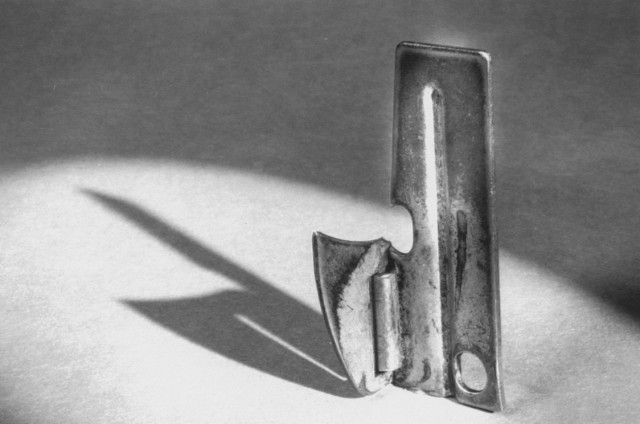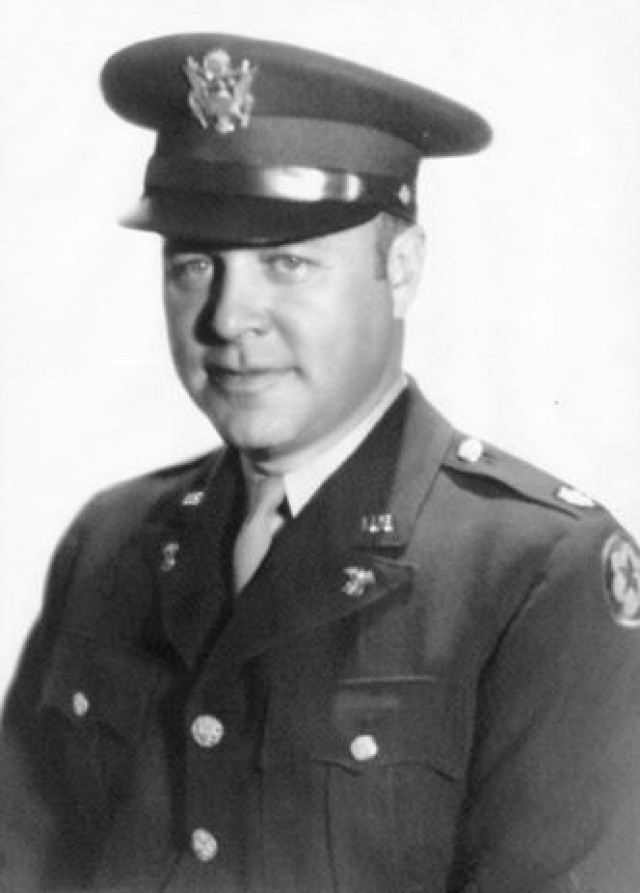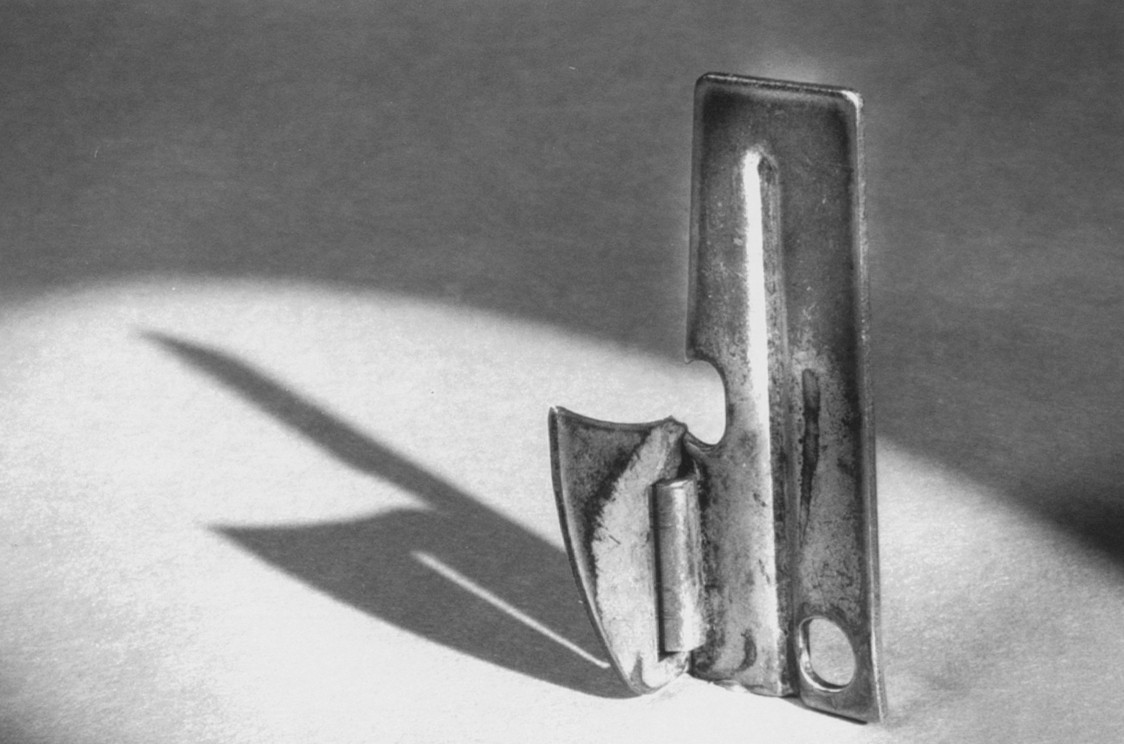He was gone forever, the Soldier who inside of six months had spent every waking minute with me, living and fighting in the latest conflict. A man who gave a whole new meaning to the words friend and family. I wanted to leave something with him to connect us through eternity, something that would assure us both he would never be forgotten. Ever. So I slipped a P-38 can opener into his pants pocket just before they took him away. (memories of a Vietnam Veteran)
FORT MONMOUTH, N.J. -- It was invented in just 30 days in the summer of 1942 by Maj. Thomas Dennehy at the Subsistence Research Laboratory in Chicago.
And never in its more than 60-year history has it ever been known to "break, rust, need sharpening or polishing," which is why many Soldiers past and present have come to regard the P-38 C-Ration can opener as one of the best Army inventions ever.
C-Rations (tin cans filled with a variety of meats and vegetables) have been replaced with Meals Ready To Eat (MREs) but the phenomena of the P-38 continues due to the countless other uses that Soldiers found for it.
"The P-38 is one of those tools you keep and never want to get rid of," military policeman Sgt. Scott Kiraly said. "I've had my P-38 since joining the Army and kept it because I can use it as a screwdriver, knife, anything!"
Sgt. Maj. (Ret.) Steve Wilson believes it's the size of the P-38 that counts.
"It's a perfect inch-and-a-half making it a great marking tool. Because it's small, it doesn't take up a lot of space and that's essential in Army life. The conveniently drilled hole in the top half means the P-38 can be put on a key ring or dog tags and go anywhere," he said.
According to Col. (Ret.) Paul Baerman, however, the most vital use of the P-38 is the very mission it was designed for.
"When we had C-rations it was your access to food, making it a priority," he said. "Then Soldiers discovered it was an extremely simple, lightweight multi-purpose tool. I think in warfare, the simpler something is and the easier access it has, the more you're going to use it. The P-38 had all of those things going for it."
The P-38 acquired its infamous nomenclature from the 38 punctures around the C-ration can required for opening and the boast that it performed with the speed of the World War II P-38 fighter plane.
"Soldiers just took to the P-38 naturally," said World War II veteran John Bandola. A master sergeant serving in the 30th Signal Construction Battalion in North Africa, Bandola began his acquaintance with the P-38 in 1943.
"The P-38 was our means for eating 90 percent of the time, but the next thing I knew we were using it for cleaning boots, fingernails, screwdrivers, you name it. And we all carried it on our dog tags or key rings," he said.
When Pfc. Martin Kuehl stormed Omaha Beach on D-Day over half-a-century ago with the Third Army's 457th Anti-Aircraft Battalion, he not only carried several pounds of equipment but a P-38 as well.
"I used it to open cans for dinner after that 'longest day'," said Kuehl. Six years later millions of the miniature can openers were distributed by the Army during the Korean War.
And while fighting on what Soldiers referred to as "Papasan Mountain" with the 24th Infantry Division, Jay Welsh discovered another vital use of the P-38 besides opening food cans.
"A clean weapon is your immediate priority because a dirty one is not going to work," said Welsh. "The P-38 was the ideal tool to field strip and clean the finer components of the M-1 rifle. I believe that two-piece hinged device saved my life. It assured me I had a rifle that would fire."
Ted Paquet was a 17-year-old seaman serving aboard the USS New Orleans amphibious assault ship during the Vietnam War. Its mission was to retrieve and transport Marines off the coast of Da Nang. On occasional evenings Soldiers gathered near Paquet's duty position in the fantail for simple pleasures like "cokes, cigarettes, conversation and C-rations."
It was during one of these nightly sessions that Paquet became acquainted with the P-38 or "John Wayne" as it's affectionately referred to in the Navy.
"I think the reason I remember this incident so well is because one of the Marines and I got to talking about where we were from, and it turned out we'd gone to high school together and I'd even dated his sister," said Paquet. He came home to Pennsylvania after surviving 12 months of war. Yet civilian life didn't end his need for the P-38.
While driving down Route 60, known as the Old Steubenville Pike with older brother Paul, another Vietnam veteran who served with the 7th Air Cavalry, car problems suddenly developed. "There were no tools in the car and almost simultaneously both of us reached for P-38s attached to our key rings," chuckled Paquet. "We used it to adjust the flow valve and the car worked perfectly."
Christmas of 1969 brought a truce in Vietnam. Paul Baerman was then a wounded first lieutenant, whose only desire was to be reunited with his platoon in time for the highly coveted holiday. His wish was granted and it remains one of the most memorable times in his military career.
"One of my Soldiers received one of those tacky evergreen foil trees," he said. "It didn't come with anything so we mounted it on top of a 50-caiber machine gun on an armored vehicle and decorated it with brass shells from ammunition, C-ration cans, and of course P-38s. They were a little dull, but that hole made it a perfect hanging ornament. So whenever I see that little can opener, I think of being there with them in 70-to-80 degree weather and singing carols around a P-38 decorated Christmas tree."
It's nostalgic memories such as Baerman's that best depict the sentimental attachment many Soldiers came to feel for the P-38.
When John Bandola attached his first P-38 to his key ring it accompanied him to Anzio, Salerno, and northern Italy.
It was with him when World War II ended and it's with him now. "This P-38 is a symbol of my life back then," reminisced Bandola. "The Army, the training, my fellow Soldiers, all those incredible times we shared during a world war."
Because the P-38 represents such a significant part of Bandola's life, he plans to leave it to his son and grandson. It's a desire his wife Dorothy understands perfectly. "Every time they look at that P-38, they'll see and remember him," she said quietly.
Vietnam veteran John Koehler grinned broadly, proclaiming the P-38 "ranks with your first girl and your first car."
Koehler proudly admits he put his first P-38 on his dog tags 25 years ago and it's still there. "The P-38 was part of my youth when I was learning all about discipline, accomplishment, and self-worth as a Soldier with the 101st Airborne Division. And if someone wanted it, well, they'd have a better chance of seeing God!" he said.
Ted Paquet's P-38 is in a special box with his dog tags, a 50-caliber shell from the ship he served on, his Vietnam Service Medal, South Vietnamese money and a surrender leaflet from Desert Storm dutifully supplied by a veteran nephew.
No one's allowed to touch the box and his wife has been given clear instructions to dust around it. "It'll be on my dresser until the day I die," swears Paquet.
According to Steve Wilson, attitudes of former veterans aren't hard to understand. "When you see a P-38 you've carried since the day you enlisted, it means a whole lot. It becomes a part of you. You remember field problems, German Reforgers, jumping at 3 a.m. in the morning and moving out in a convoy. A P-38 has you reliving all the adventures that came with soldiering in the Armed Forces. Yes, the P-38 opened cans but it did so much more. Any Soldier will tell you that," he said.
There have been other inventions that Soldiers came to cherish, such as the steel helmet that proved ideal for washing, shaving, and cooking; the faithful, trustworthy jeep, guaranteed to go anywhere in any kind of weather and the TA-50 ammunition pouch for storing those personal items Soldiers just couldn't leave behind.
Thomas Dennehy's P-38, however, remains the Army's finest creation.
As one of the "most perfectly designed tools in history," Dennehy counted on Soldier imagination to raise the P-38 to even greater heights than just opening cans.
The P-38 was an item he knew a majority of service members would come to possess and share, and thus promote the kind of camaraderie and bonding all Soldiers need and depend on.
Perhaps that is what this patron saint of Army inventions had in mind all along.
(Editor's note: This is the first story in a series featuring World War II novelties.)




Social Sharing